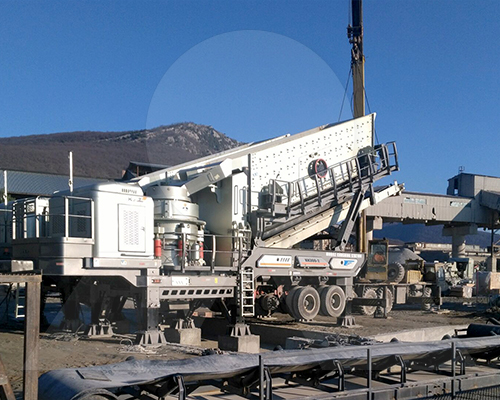Wheeled and Tracked Cone Crushers for Primary Crushing
Wheeled and tracked cone crushers are essential tools in primary crushing applications, particularly for heavy-duty industries like mining and construction. Known for their flexibility, durability, and high processing power, these crushers are ideal for processing large quantities of hard materials. This article explores the advantages, applications, and unique features of wheeled and tracked cone crushers in primary crushing operations.
Key Advantages of Wheeled and Tracked Cone Crushers
- Enhanced Mobility and Flexibility: Both wheeled and tracked designs offer significant mobility, making these crushers easy to transport and install on various terrains. Wheeled cone crushers are optimal for easy relocation within a site, while tracked models provide greater stability on uneven ground, often found in open-pit mining and construction zones.
- High Efficiency in Primary Crushing: Cone crushers excel at reducing large, hard materials into smaller pieces suitable for secondary crushing or further processing. Their high crushing efficiency allows them to handle large feed sizes, making them an ideal choice for primary crushing of tough materials like granite, basalt, and iron ore.
- Cost-Effective and Low Maintenance: Equipped with advanced technology and robust designs, these crushers are cost-effective for long-term use. Modern cone crushers come with features like automated settings and wear monitoring, reducing downtime and maintenance costs, which is critical for primary crushing operations where uninterrupted production is a priority.
Applications in Primary Crushing Operations
- Mining Industry: In the mining industry, wheeled and tracked cone crushers are commonly used to crush large chunks of extracted ores. Their high capacity allows them to efficiently handle massive amounts of material, preparing it for further processing stages, such as secondary crushing and refining.
- Construction and Infrastructure Projects: Cone crushers play a pivotal role in the construction industry, where they are used for the primary crushing of building materials, including stone, sand, and gravel. This equipment supports the production of high-quality aggregates used in infrastructure projects like roads, bridges, and foundations.
- Recycling of Construction Waste: These crushers can also process construction waste, breaking down concrete, asphalt, and other debris into reusable materials. This capability not only aids in recycling efforts but also reduces the volume of waste directed to landfills.
Technical Features and Unique Capabilities
- Adjustable Crushing Settings: Both wheeled and tracked cone crushers allow operators to adjust settings based on material type and desired product size. This flexibility ensures the production of a consistent, high-quality output suitable for various downstream applications.
- Durable Design for Heavy-Duty Use: Constructed with wear-resistant materials, these cone crushers are built to withstand high stress and handle abrasive materials. Their rugged build and quality components increase longevity, especially under demanding conditions typical of primary crushing.
- Automated Systems and Safety Features: Many modern models come with automation that enhances both operational efficiency and safety. Automatic adjustments, real-time wear monitoring, and emergency shutdown systems are now standard, helping to prevent unexpected failures and extend equipment life.
Economic and Environmental Benefits
The use of wheeled and tracked cone crushers for primary crushing helps companies save on transportation costs and achieve more efficient site operations. By processing materials on-site, businesses reduce the need for transporting raw materials, cutting down on fuel consumption and CO₂ emissions. Additionally, using these crushers for material recycling aligns with sustainable practices by minimizing waste and promoting resource recovery.
Conclusion
Wheeled and tracked cone crushers are powerful, adaptable solutions for primary crushing needs across various industries. Their high efficiency, mobility, and low maintenance requirements make them suitable for large-scale projects and demanding environments. By integrating these crushers into primary crushing processes, companies can improve productivity, reduce operational costs, and contribute to environmental sustainability.
- > Solving High Cone Crusher Maintenance Frequency in Copper Ore Crushing
- > Crusher Selection Guide: Choosing the Right Machine Based on Material Hardness
- > The Role of Concrete Impact Crushers in Cement Production Lines
- > Advantages of Cone Crushers Over Jaw Crushers
- > Portable Crushers for On-Site Recycling: Benefits, Applications, and How to Choose
- > The Role of Cone Crushers in Iron Ore Beneficiation Processes
- > Vibrating Jaw Crusher: A Powerful Solution for Russia’s Mining Industry
- > Jaw Crushers for Quarrying: Power, Efficiency, and Durability
Hot Product


Online




Message

